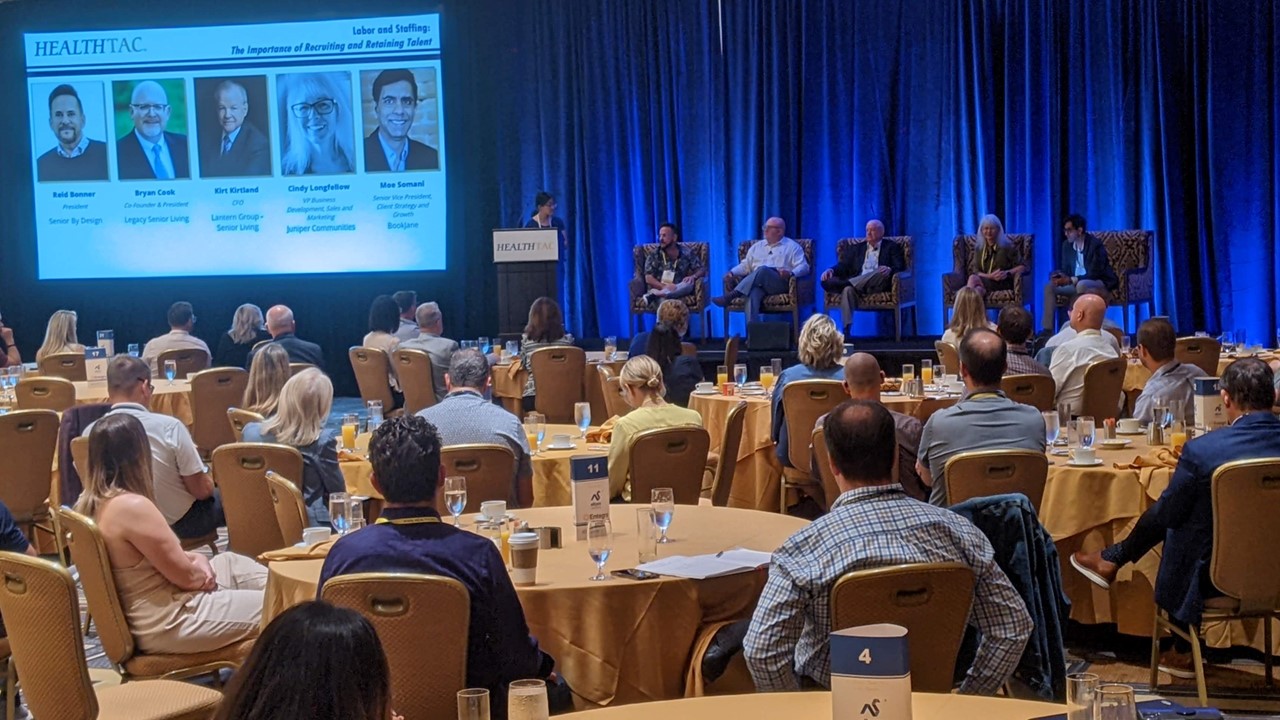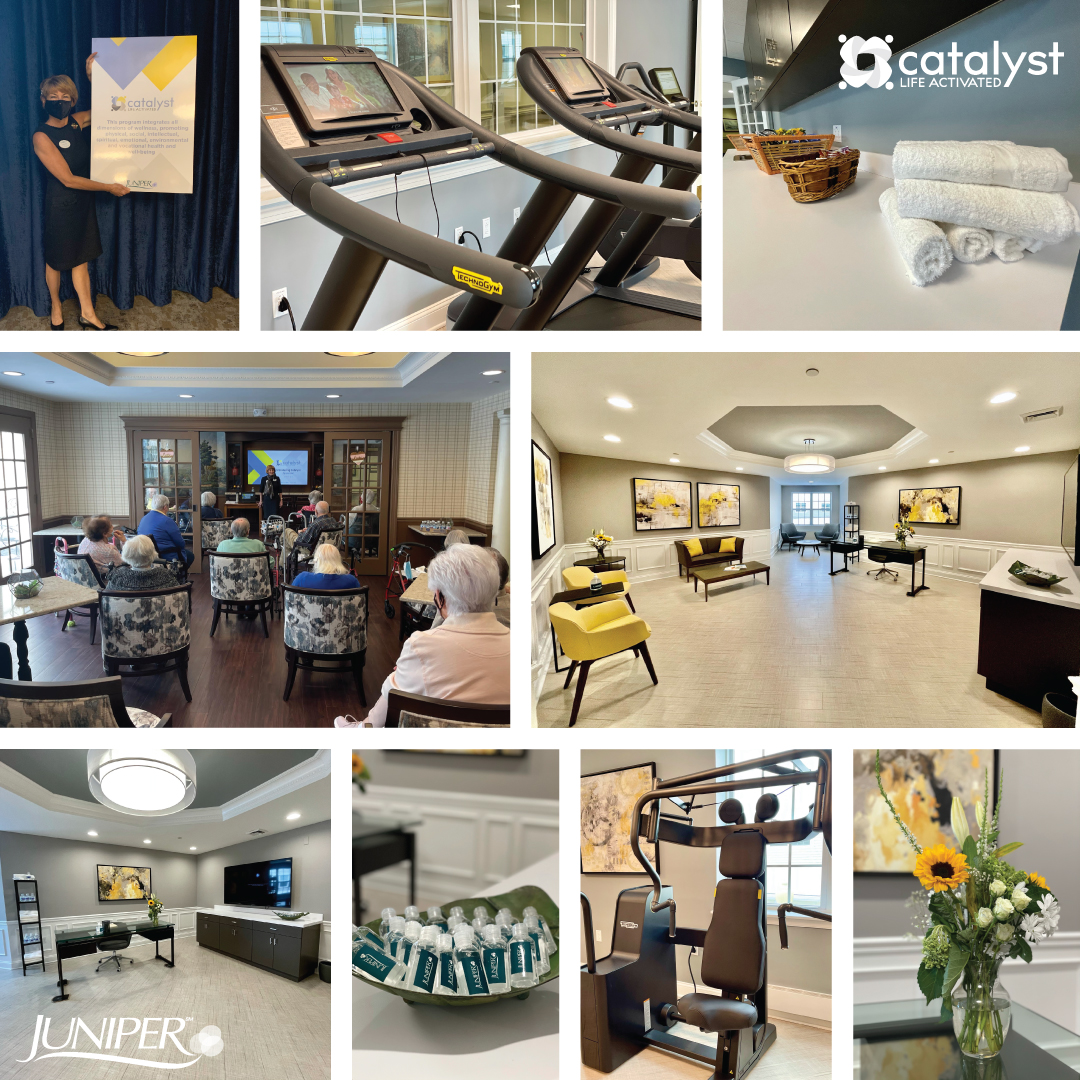
Labor and Staffing: Recruiting and Retaining Talent
By Caroline Chan | September 22, 2022
The pandemic and Great Resignation had—and continue to have—effects on the senior living industry. During our recent HEALTHTAC event in Scottsdale, Arizona, there was a panel entitled “Labor and Staffing: The Importance of Recruiting and Retaining Talent.” The industry experts who provided their insight on that panel spoke to their communities’ staffing strategies.
“When 2020 March rolled around and things began to devolve, we began to see the role that our sales directors could play in recruitment. They weren’t doing as many tours and they weren’t as busy with their sales work, so we put them to work recruiting,” said Cindy Longfellow, vice president of business development, sales and marketing at Juniper Communities, which is based in Bloomfield, New Jersey. “We also put together an applicant tracking system that we use, not unlike we use a CRM on the sales side.”
Kirt Kirtland, CFO of the Lantern Group, noticed that along with getting applicants that have not yet worked in the industry, people that used to work in senior living are coming back. The Lantern Group is based in northeast Ohio, and it has three communities.
“We’re actually seeing people who had gotten out of the industry, coming back into the industry,” he explained. “We’re rehiring the people that we’ve already known—and they’re coming to us, versus us trying to find them.”
However, the recruitment process has still been a struggle for many communities.
“Over the last two years, we have tried a lot of things,” said Bryan Cook, co-founder and president of Legacy Senior Living, which is based in Cleveland, Tennessee. “Everything that we have done historically…is on the table, evaluated and may get thrown off the table.”
One strategy he’s employed has been showing applicants their potential for advancement.
“Their big question is, ‘What’s in it for me?’” said Cook. “[We show them that] if you’re a caregiver, you can be the lead caregiver, you can grow to be a med tech or you can go into the nursing program.”
A positive company culture can also be a strong selling point. “What we recognized is, we weren’t selling our culture to potential associates and team members in the same way that we were selling our culture to our prospective residents and families,” Longfellow said. “That’s really been the biggest thing for us—think about recruitment and retention in the same way we think about marketing and customer engagement.”
When it comes to retention, it’s important to figure out and address the root cause.
“There’s all these different things around burnout, pay,” began Moe Somani, senior vice president of client growth and strategy at Canada-based BookJane, which is an automated system to help staff take on more shifts. “All those things come into play, but what’s really the root cause that you have around retention issues, and how do you fix that problem quickly?”
The number one thing that his company sees is staff flexibility. “For example, you have a schedule—40 hours, Monday to Friday—but some people just can’t work that way anymore,” Somani said. “So how do you adapt that schedule, still get them the 40 hours and still get what you need as a facility to ensure that those shifts are being filled? Technology, innovation and those type of things can help do that, but being [flexible and] adapting to the staff will reduce your retention issues that you have right now.”
Longfellow agreed that flexibility is key. “In our aging C-Suite of seven, only two of us…are under 60, and we had our first resignation off of our team in June of this year,” she said. “Almost concurrent with that, we had the first resignations of two of our long-term executive directors.”
She added that those employees have accumulated so much knowledge during their tenure that will now be lost. “They may no longer want to work for Juniper (or anywhere) full-time, but can we capitalize on their knowledge and expertise and offer them projects or part-time?” Longfellow said. “Think about how you can capitalize on talent that wants to leave…Maybe we can create a balance of flexibility and stability—even for those younger associates—to keep them with us longer.”
For Reid Bonner, president of Dallas-based Senior By Design—a company that creates, builds and remodels communities—the key to keeping staff has to do with culture. “We try our very best to really connect with our staff,” he said. “We’ve worked hard to create this fun, exciting place.”
For example, after the team completes an installation, he takes them out to dinner. During the meal, they go around and have everyone talk about how their team members positively impacted them during the project.
“They get to hear their value to their teammates, the other teammates are hearing that as well, and that constant buildup of their gifts and talents is heard,” Bonner said. “We’ve created a space that is fun, heard and seen.”
Cook uses the motto ‘’ready-aim-fire” when it comes to retention—but slightly modified. “I say ready-fire-aim, and then fire again, and then aim again,” he said.
He explained this by comparing it to a song he heard on Sesame Street, which he watches with his young granddaughter. “There’s a song on there [called] I Wonder, What If, Let’s Try,” Cook said. “That’s what we’re doing: I wonder if we can do this, let’s try and then let’s evaluate whether it works.”
However, whatever your company’s recruitment and retention difficulties may be, Cook stressed this: “There are no silver bullets to this challenge,” he said. “A lot of times in our corporate offices, we come out with some edict that we think’s going to work globally—and I haven’t found that it works. Each market is different; play to the strengths and the leadership in your communities, and then build your plan to recruit [and] retain toward those strengths—and hopefully you have some success.”





